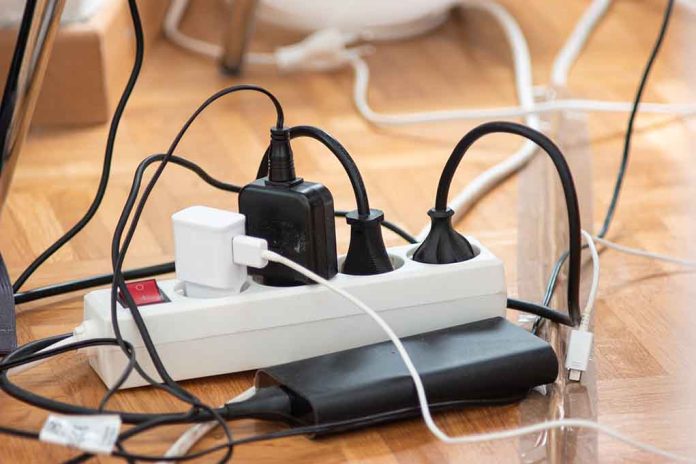(HealthyExaminer.com) – Extension cords often make life easier, offering a convenient way to connect your electronic devices to the nearest power source. Both indoor and outdoor extension cords can help you power television, computers, gaming systems, and even holiday decorations. As helpful and convenient as they can be, extension cords are also a fire hazard when safety warnings aren’t followed.
According to Electrical Safety Foundation International (ESFI), extension cords cause an estimated 3,300 home fires each year, killing 50 people and injuring another 270 individuals.
Do you know how to use an extension cord safely?
Choosing the Right Extension Cord
The most important part of safe extension cord use is choosing the right extension cord for the job. As a consumer, you might be looking at the length of the extension cord you need and assessing if the price is right, but there are other considerations that are more important when it comes to staying safe.
- Check that the extension cord packaging shows that it has been tested in a nationally recognized independent testing lab.
- Choose extension cords marked for the appropriate use. Indoor extension cords are not interchangeable with outdoor ones.
- Opt for extension cords with three-pronged plugs.
- Check the instructions for how much power the cord can handle and compare it to its intended use.
- Use thicker extension cords for larger appliances and smaller ones for smaller electronics.
- Check the length and make sure you choose an extension cord that is adequate for your needs.
Extension cords are designed to power specific wattages. Find out how much power you need before you shop for extension cords in order to avoid overheating or overloading the cord and causing a fire hazard.
Extension Cord Do’s and Don’ts
When you’re using the extension cord you’ve selected, there are still safety precautions you can take to avoid a fire hazard from overheating, overloading or damage to the cord. Let’s take a look at some do’s and don’ts when it comes to extension cord use.
- DO unplug extension cords when they aren’t being used.
- DO throw away damaged extension cords and replace them with undamaged ones.
- DO remove extension cords by the plug rather than by pulling the cord.
- DON’T try to power multiple appliances with one extension cord.
- DON’T use indoor extension cords outdoors.
- DON’T tape, nail, or staple extension cords to surfaces.
- DO store your extension cords indoors when they aren’t being used.
- DO make sure cords are visible to avoid a tripping hazard.
- DO regularly check your extension cords for signs of wear, tear, and damage.
- DON’T run extension cords under carpets or rugs.
- DON’T use extension cords that feel hot to the touch.
- DON’T bend extension cords when they’re in use.
- DO install more outlets if you find that you’re using too many extension cords to run power in your home.
- DON’T let extension cords sit in snow or water.
- DON’T use extension cords with heaters or fans, which can create an overheating danger.
Extension cords are convenient for at home and even in the office. Whether you’re using them to power an indoor appliance or to power your holiday light display, extension cords are a useful tool that can power your devices and make your life easier. With a few basic safety precautions, extension cords can benefit your life without putting it in danger. Purchasing the right extension cord is just as important as taking good care of it and making sure it doesn’t overheat or overload from improper use.
Copyright 2022, HealthyExaminer.com














